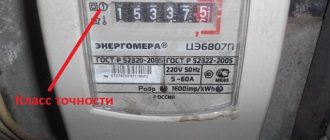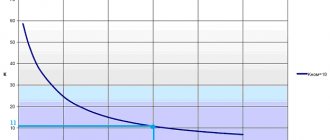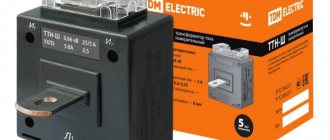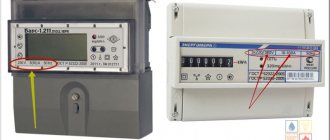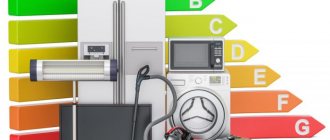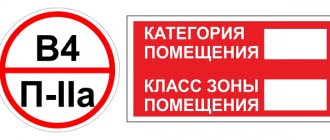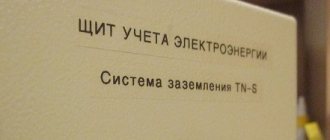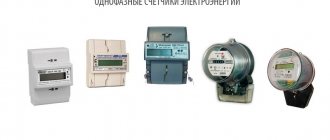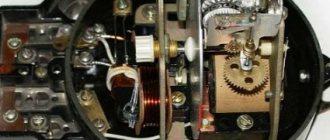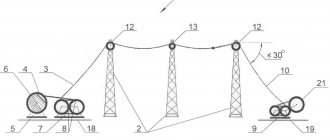To take into account the electricity consumption of both private households and apartments, as well as enterprises, devices are installed that allow recording electricity consumption.
Determining the accuracy class of these devices is not difficult. The number, which is applied to the body of the electric meter and enclosed in a circle, precisely designates this class.
Today there are 5 accuracy classes for electricity consumption metering:
- 5,0;
- 2,0;
- 1,0;
- 0,5;
- 0,2;
The accuracy class expresses the percentage of error that is possible when calculating electricity with these devices. Standard 5.0 is considered obsolete today and is not used for the manufacture of electricity meters.
Accuracy class 2.0 is used in induction type meters. Standard 1.0 is used in electronic devices. Standards 0.5 and 0.2 have the highest indicators for calculating consumed electricity.
A Question of Choice
To install an electric meter in a private house or apartment, models that have a class of at least 2 are suitable.
In addition, when going to the store to buy an electric meter, you should know exactly the following characteristics:
- Phase of the electrical network. If the electrical network connected to the meter is single-phase, then the device must also be for a single-phase network. A three-phase electric meter can also be installed to track electricity usage, but such devices tend to be more expensive. When the meter is installed to measure three-phase current, the corresponding inscription must be indicated on it. Single-phase devices are not used to calculate three-phase current.
- Load under which this device will be operated. Depending on the maximum load that will be connected to the electricity metering device, a model is selected, on the body of which this indicator is indicated. For a standard load used in a private home, electric meter models designed for a maximum current of 60 A are used. If you plan to connect powerful electric heating boilers, then an electric meter is selected with an indicator of at least 100 A.
- If the electricity supplier can sell electricity at 2 tariffs , then the tariff of the meter is also taken into account when purchasing. Two-tariff devices allow you to save significantly on electricity bills. When using electricity at night, such a meter will record consumption separately. If the electricity supplier allows such payment, then installing a multi-tariff meter will allow you to use electricity more efficiently.
- Mounting method. Allows you to install the device in an existing box, or in place of a device that was previously installed.
Price of electricity meters
Depending on the accuracy class, the price of this measuring device changes. Nowadays, a person who comes to the store for such a device can buy a meter with an accuracy class of 1 and lower. Today, a device for measuring electricity of 1st accuracy class will cost about 1,500 rubles.
Read also: Device for measuring illumination in industrial premises
But if the model is multi-tariff, then this will increase the cost by about 2 times. Devices with an error of 1.5% will cost a little less. The old induction meters, which operate on the disk principle, are no longer produced these days.
Types of meters
Depending on the phase of the electricity that must be taken into account in this way, devices for calculating electricity are single-phase or three-phase. Modern three-phase electricity meters can be installed in a single-phase network.
In the case when the electric meter is connected to consumers through a measuring transformer, the meter is called a transformer meter.
When the measurement uses exclusively the microprocessor principle of recording consumed electricity, such devices are called electronic.
There are electric meters of a combined operating principle , when registration occurs using a processor, and readings are displayed using an electromechanical device.
What are the accuracy classes?
In accordance with established norms and rules, initial verification is performed by the manufacturer.
The accuracy class is specified in the passport, which is accompanying documentation for any electricity meter.
It is from this factory mark that the standard time interval is counted.
Further checks are carried out:
- for electric meters – 9-15 years;
- for mechanical single-phase electric meters – 16 years;
- for electric meters with accuracy class indicators of 0.5 units - 5 years;
- for a three-phase meter – 5-9 years;
- for modern electric meters – 15 years or more.
Verification involves dismantling the electricity meter and submitting it to a special laboratory that is accredited to perform this type of work.
Indication of the accuracy class on the metering device
Based on the results of the inspection, a document is issued that is evidence of the serviceability of the device or reflects the need to purchase a new electric meter. Currently, there are five accuracy classes: 0.2, 0.5, 1.0, 2.0 and 5.0, which is a display of the percentage of error possible when calculating electrical energy with a metering device.
Cost of devices
The cost of an electric meter depends on many parameters, including the accuracy class of the device.
Popular models:
Typeit NEVA 101 1S0 151499
Modern electrical energy consumption recorder with accuracy class: 1.
Allows you to accurately account for energy consumption. NEVA 101 1S0 151499 is connected only to a single-phase electrical network.
Cost – 1118 rubles.
Incotex Mercury 230 AM-02 53469
Three-phase electric meter. Accuracy class of this device: 1;
The electricity meter uses single-tariff metering of electricity consumption. Thanks to the high quality of this device, the electricity used is recorded as accurately as possible.
The cost of the device is 3400 rubles.
Energy meter CE 102M R5 145 J 253295
This electrical product has a digital display to display meter readings.
Fully electronic device with accuracy class: 1; allows you to accurately calculate the electricity used. This device can only be used in a single-phase network.
Cost 2300 rubles.
Skat 105E/1-5(60) TOI4 1f 5-60A
Single-phase multi-tariff meter, allowing maximum savings on electricity bills. Due to the fact that the device has class 1 accuracy, counting is carried out as efficiently as possible. The device can only be used in single-phase networks.
The cost of such a device is 1900 rubles.
PSK Lyubertsy SO-51 PK
Single-phase meter, 2 accuracy classes. This model can be used both in private homes and commercial purposes.
Price – 850 rubles.
Electricity meters - electricity meters
Since the eighties of the nineteenth century, electricity meters have been used to save energy. Currently, several main types of meters are used: Induction (electromechanical), Electrolytic and modern - Electronic (programmable, with a liquid crystal display).
Throughout the twentieth century, “Induction electricity meters” were most widely used due to their low cost and high operational reliability. In recent years, the number of electronic multi-tariff electric meters has been increasing.
A planned, massive replacement of electricity meters is currently underway. Causes:
- in connection with the advent of energy-intensive household appliances (two-kilowatt appliances - electric stoves, air conditioners, microwave ovens and others, the power consumption of which reaches 10 amperes, and in total - more than 20), old household electric meters (not designed for such currents) receive significant overloads, which causes fires. For this reason, all currently manufactured electricity meters are designed for power consumption of up to 40-60 amperes.
— electric meters of accuracy class 2.5 must be replaced by electric meters with a higher accuracy class. — 2.0 or 1.0.
Replacement standards
Old electric meters are no longer subject to manufacture, repair or state verification and must be replaced before the end of the verification interval (i.e. within 16 years from the date of the last verification of the device), or as a result of their obvious failure. According to the latest Decree of the Government of the Russian Federation dated 04.05.2012 N 442 (replacing the previous regulation No. 530 dated August 31, 2006) “On the functioning of retail markets for electrical energy, complete and (or) partial limitation of the consumption of electrical energy” accounting for electrical energy consumed by citizens should be carried out only with electric meters of accuracy class 2.0 and higher. The replacement of electricity meters is regulated by the decision of the State Standard of the Russian Federation and the letter of the State Energy Supervision Service dated 2000. Replacement of a device for metering consumed electricity in a residential premises owned by the consumer (including private households) is carried out at his expense (in accordance with Article 210 of the Civil Code of the Russian Federation).
If the metering devices are located in public places (on stairwells and landings) and they are not the property of consumer citizens, but are on the balance sheet of the energy supply organization or the owner of the house (municipality, state organization, etc.) - the owners of the house must ensure proper maintenance of the metering devices on their balance sheet, and also bear all costs for the purchase, installation, connection of electricity meters, including those that fail through no fault of the subscriber and (or) in connection with replacement in the prescribed manner with another class accuracy.
The division of responsibilities for replacing and servicing electric meters is paragraph 2 of Article 543 and Article 210 of the Civil Code, Federal Law No. 261 and Decree of the Government of the Russian Federation No. 354 (as amended on August 27, 2012).
Reprogramming of two-tariff and three-tariff electricity meters in connection with the transition to permanent winter time
After changes to the Federal Law “On the Calculation of Time” come into force on October 26, 2014, there will be a need to reprogram electronic multi-tariff electricity meters, otherwise the device data will be incorrect.
It is necessary to contact the organization that provides these services and, after completing the work (their deadlines are determined by energy sales), provide your energy supply or management company with an act on reprogramming the meter to a new tariff schedule, with all the necessary attachments. You need to submit your application early, in advance, because... there will be long queues (it’s easier to arrange this online by filling out the feedback form on the company’s website). The cost of flashing “on site” is set by the company performing the work. Prices throughout the country are about 400-900 rubles. If everyone submits a collective application, it will be cheaper.
Reprogramming is carried out in two stages: 1) before October 26, 2014, it is necessary to carry out programming to allow the time transition “from summer to winter” (1 hour ago); 2) after the meter switches to “winter” time until March 29, 2015, prohibit the seasonal changeover to “summer” time.
After reprogramming, you need to write an application to your energy sales company to seal the electric meter (this is a free procedure).
In the event that the electric meter is not reprogrammed on time, the tariff will be calculated using a formula that is not differentiated by day zones (at the full tariff).
It is possible that for individuals, the period for mandatory re-flashing of meters may be extended until March 2015. The costs will likely be passed on to consumers.
From October 26, 2014, all new electricity meters, when installed, will be programmed taking into account the new rules.
Reprogramming is mandatory for legal entities, incl. for providers of public services.
Those who do not have time to reprogram their metering devices will have to pay at the peak tariff until this work is completed. Upon written application, you can switch from a two-rate tariff to a one-rate (daily) rate.
Users who have simple induction meters installed and energy consumption is metered at a single tariff rate are not affected by this problem. Calculation according to the interval tariff is possible only on electronic digital devices for metering consumed electricity.
Basic Concepts
Electricity consumption is measured in kilowatt-hours (kWh)
The meters are designed for a certain voltage (127 or 220 V) and electric current (5, 10, 20, 40 or 60 A)
According to device quality standards (GOST), the maximum permissible clock error in electronic multi-tariff meters should be no more than 7.5 minutes.
In the backup power supply circuit of programmable multi-tariff electric meters, expensive lithium-thionyl chloride special elements are installed that can operate for quite a long time - for at least 15 years, thanks to very slow self-discharge. These elements have a temporary drawback - the passivation effect (low voltage at the terminals), during initial switching on or after a long break in operation.
Blitz tips
- Installation of the meter should be carried out only by professional electricians , in the presence of an inspector from the electricity supplier company, who will seal the new device and record its readings.
- The lower the accuracy class, the more accurately the amount of energy consumed will be displayed. When purchasing such an electrical product, you should pay attention to this indicator first.
- In order to install a new mechanism for calculating the energy used to replace the old, outdated design, it is necessary to notify the electricity supplier 30 days before such installation.
- The use of multi-tariff devices allows you to use the most powerful electrical appliances at night. For example, washing machines can be set to run at certain times in a fully automatic mode.
What accuracy should modern metering devices have?
At the moment, all electricity metering devices are divided into accuracy classes, of which there are officially five. This series includes values 5.0; 2.0; 1.0; 0.5; 0.2. The available figures represent the permissible percentage of error allowed for meters when calculating electricity. They answer the question of what accuracy class should an electric meter used in a particular location have.
As of today, in 2021, the value of 5.0 exists only formally, since it is outdated and laws prohibit its use in the manufacture of electricity metering equipment. The accuracy class in relation to apartments is allowed no higher than 2%, that is, outdated equipment is gradually being replaced by new models. Accuracy 2.0 is used in induction electricity meters, and accuracy standard 1 is used in electronic ones. Parameters 0.2 and 0.5 are considered the highest, and are used where high accuracy of accounting data is required.
Read also: Do-it-yourself Hansa dishwasher repair
What accuracy class is required for an apartment?
Household consumers are equipped with electricity meters with a measurement accuracy of at least 2.5. This limit is used on induction electromechanical devices. More accurate electronic and digital models make it possible to carry out measurements with an error of no more than 1 or 1.5. Household meters with higher classes are not produced, since there is no need for this.
Definitely, the answer to the question of what accuracy class should be can be answered by the energy supply organization; in addition, this nuance is always specified in the electricity supply agreement concluded with each consumer. As a rule, only the lower limit is set, but the consumer is not limited in choosing a higher class.
Consumer choice: electricity meter Mercury 230
22 modifications of the Mercury 230 counter have been developed. Three-phase single-tariff and multi-tariff metering of active, active-reactive energy of direct and transformer connection, with a pulse output and a built-in data transmission modem. The warranty is set for a period of 36 months. The interval between verifications is 10 years. The accuracy class of the Mercury 230 electric meter is in the range of 0.5 – 2.0.
The meter is capable of diagnosing its own condition and displaying diagnostic results on the screen.
The electric meter is endowed with a set of consumer properties that place it one step above other Russian-made devices. Imported devices with similar functionality are more expensive and inferior in quality of work.
Manufacturers are concerned with the internal structure of the electric meter.
Mercury models are equipped with a similar algorithm for taking readings. For example, consider a three-phase multi-tariff meter with a liquid crystal display. Above the screen there is an indication strip indicating the operating mode.
On the front panel on the right side of the screen there are the “Enter” and “Ring” buttons. The “Enter” button allows you to switch from the readings of one tariff to the readings of another tariff. When performing the procedure, the skill of working with a computer mouse will help, because a short press is required.
The “Ring” button selects the operating mode. Begin taking readings by selecting mode “A”. A line in field “A” will light up on the indicator strip. If the device is ready to take readings, the “kW/h” symbols will appear on the right side of the screen.
Using the “Enter” button, we sequentially take readings according to the “Day”, “Night”, “Half-Peak” tariffs. Tariff values are displayed on the left side of the screen.
To calculate the amount of energy consumed, we subtract the readings of the previous month from the current readings and pay for the total in an accessible way.
“Mercury” is the trade name of the metering device. “230” is the serial number of the model. This is followed by two numbers indicating the modification by accuracy class, current and voltage. A series of Latin letters means the presence of an event log, a log of power quality indicators, the type of interface, internal and backup power supply of the meter and the presence of an electronic seal.
A modem is connected to electric meters with a digital output to automatically collect readings.
